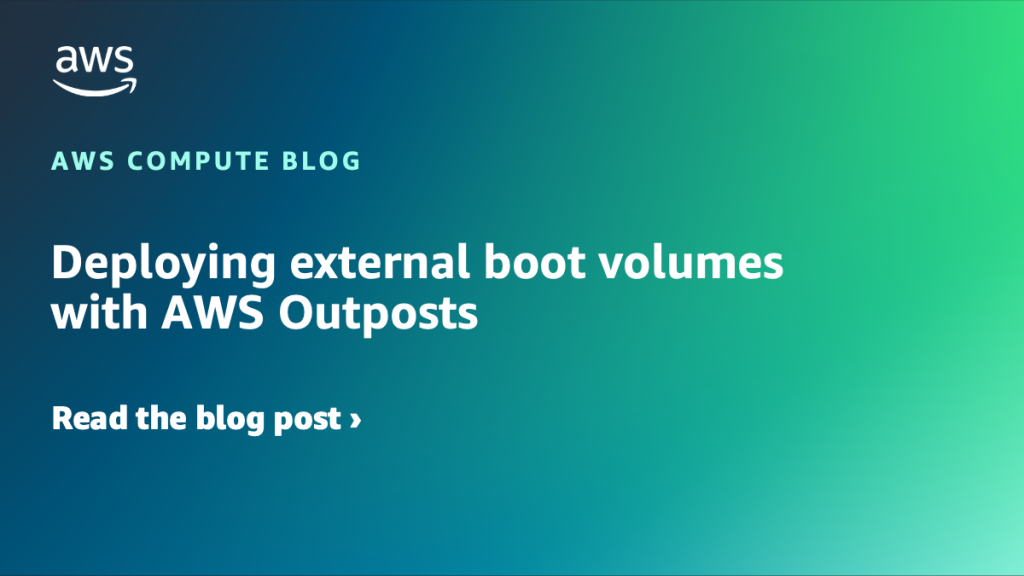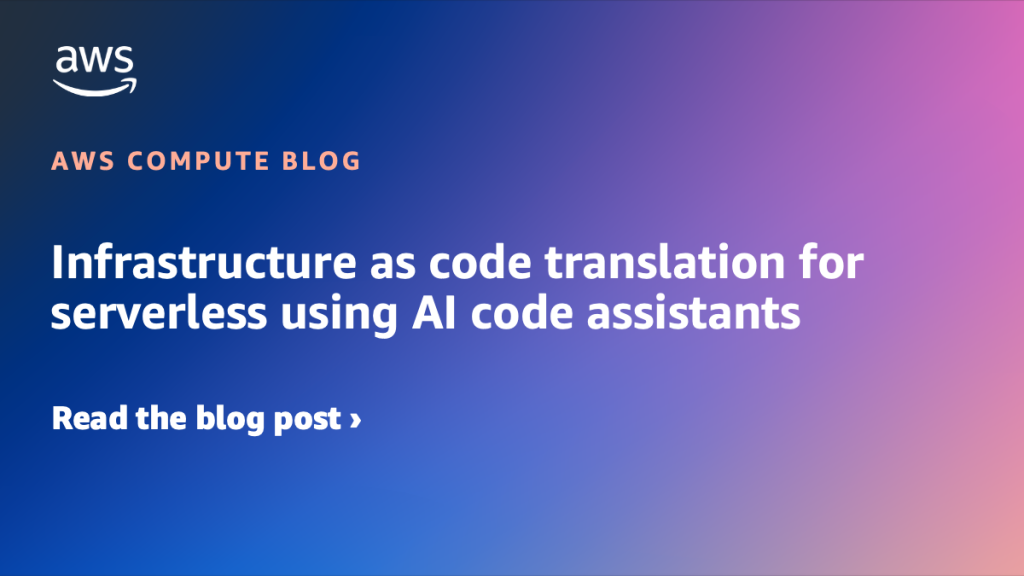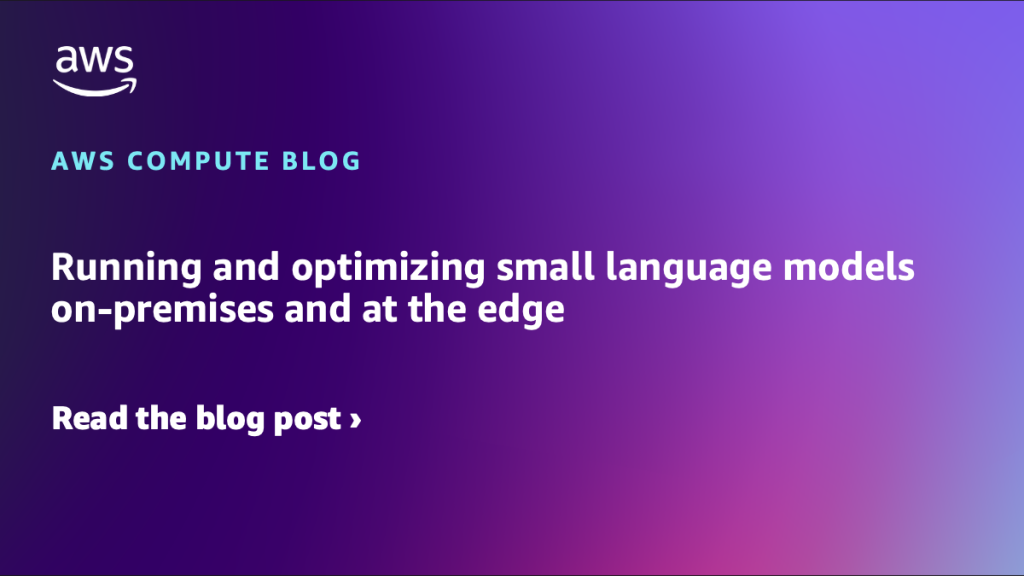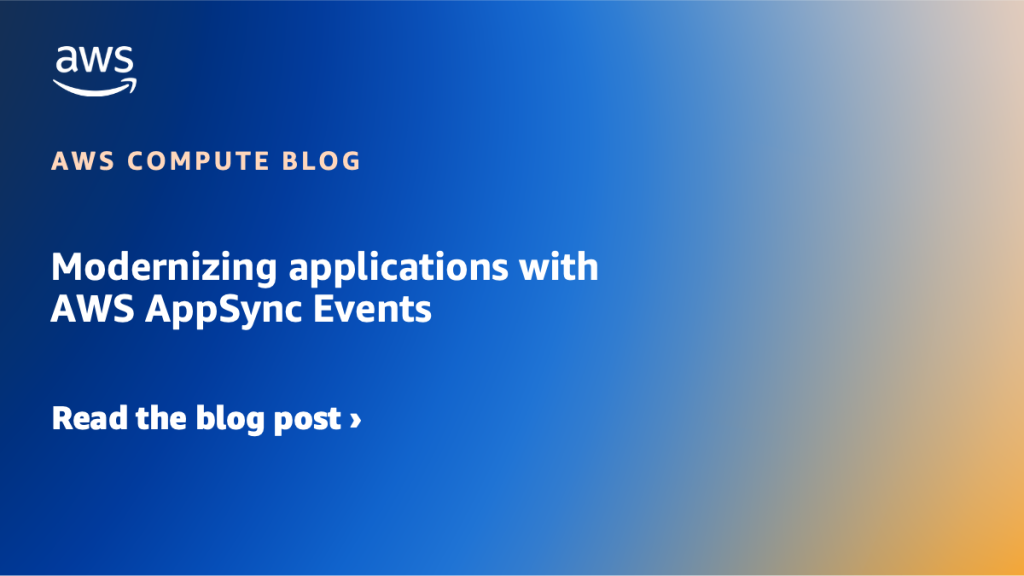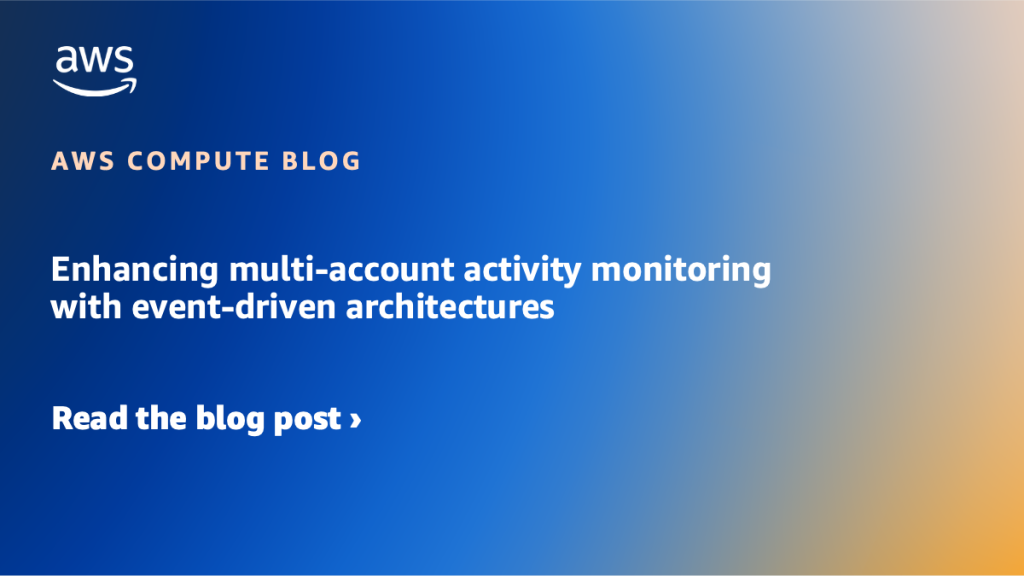AWS Compute Blog
Category: Technical How-to
Deploying external boot volumes with AWS Outposts
Building on our previous announcement, AWS Outposts third-party storage integration for data volumes, AWS is expanding its collaboration with third-party storage solutions by introducing support for boot volumes backed by external storage arrays. In this post we show you how to boot Amazon Elastic Compute Cloud (Amazon EC2) instances on Outposts directly from NetApp on-premise […]
Infrastructure as code translation for serverless using AI code assistants
Serverless applications commonly use infrastructure as code (IaC) frameworks to define and manage their cloud resources. Teams choose different IaC tools based on their skills, existing tooling, or compliance needs. As applications grow, the need to shift between IaC formats may arise to adopt new features or align with evolving standards. Developers are rapidly adopting AI-powered […]
Modernizing SOAP applications using Amazon API Gateway and AWS Lambda
This post demonstrates how you can modernize legacy SOAP applications using Amazon API Gateway and AWS Lambda to create bidirectional proxy architectures that enable integration between SOAP and REST systems without disrupting existing business operations. Many organizations today face the challenge of maintaining critical business systems that were built decades ago. These legacy applications power […]
Orchestrating document processing with AWS AppSync Events and Amazon Bedrock
Many organizations implement intelligent document processing pipelines in order to extract meaningful insights from an increasing volume of unstructured content (such as insurance claims, loan applications and more). Traditionally, these pipelines require significant engineering efforts, as the implementation often involves using several machine learning (ML) models and orchestrating complex workflows. As organizations integrate these pipelines […]
Running and optimizing small language models on-premises and at the edge
As you move your generative AI implementations from prototype to production, you may discover the need to run foundation models (FMs) on-premises or at the edge to address data residency, information security (InfoSec) policy, or low latency requirements. To address users’ data residency, latency, and InfoSec needs, this post provides guidance on deploying generative AI FMs into AWS Local Zones and AWS Outposts.
Networking of Amazon MQ for RabbitMQ event source mapping for AWS Lambda
Event-driven architectures with message brokers need careful attention to security best practices. Amazon MQ for RabbitMQ combined with AWS Lambda enables serverless event processing. However, implementing defense in depth and least privilege principles necessitates a clear understanding of networking requirements. This is particularly important when working with different subnet types and their impact on service […]
Validating event payload with Powertools for AWS Lambda (TypeScript)
In this post, learn how the new Powertools for AWS Lambda (TypeScript) Parser utility can help you validate payloads easily and make your Lambda function more resilient. Validating input payloads is an important aspect of building secure and reliable applications. This ensures that data that an application receives can gracefully handle unexpected or malicious inputs […]
Optimizing ODCR usage through AI-powered capacity insights
Efficient resource management is crucial for organizations seeking to optimize cloud costs while making sure of seamless access to compute capacity. Amazon EC2 On-Demand Capacity Reservations (ODCRs) provide the flexibility to reserve compute capacity within a specific Availability Zone (AZ) for any duration. In this post, we demonstrate how Amazon Bedrock Agents can help organizations gain actionable insights into ODCR usage across their AWS environment.
Modernizing applications with AWS AppSync Events
In this post, you learn how to use AWS AppSync Events to modernize your applications by bridging synchronous and asynchronous communication patterns without requiring significant changes to your existing frontend code.
Enhancing multi-account activity monitoring with event-driven architectures
Enterprise cloud environments are growing increasingly complex as they scale, with organizations managing hundreds to thousands of Amazon Web Services (AWS) accounts across multiple business units and AWS Regions. Organizations need efficient ways to collect, transport, and analyze activity data for threat detection and compliance monitoring. In this post, you will learn to use AWS CloudTrail and Amazon EventBridge for real-time cloud activity monitoring and automated response.
